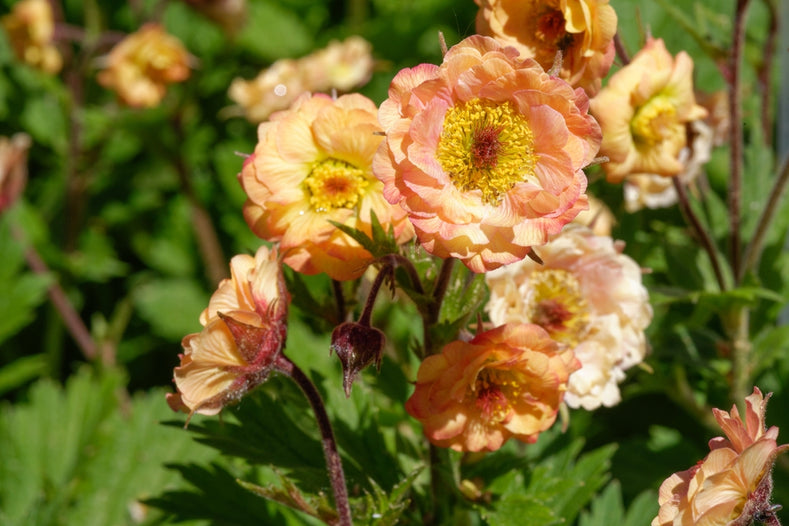Geum, commonly known as Avens, is a herbaceous perennial plant that belongs to the Rosaceae family. It is native to Europe, Asia, and North and South America. Geum plants are well-loved for their attractive flowers and ornamental foliage, making them popular choices in gardens and landscapes.
Geums typically have basal rosettes of leaves and upright stems that bear the flowers. The leaves are usually deeply lobed and may be toothed or smooth, depending on the species. The foliage can be green or sometimes tinged with bronze or purple hues.
The flowers of Geum are the highlight of the plant. They come in a variety of colours, including shades of red, orange, yellow, and white. The flowers have five petals and a prominent centre of stamens, giving them a distinct appearance. The blooms are often cup-shaped and attract pollinators like bees and butterflies.
Geum plants prefer well-draining soil and thrive in areas with full sun to partial shade. They can adapt to various soil types, but a fertile, humus-rich soil will yield the best results. Geums are generally hardy and can tolerate cold temperatures, making them suitable for temperate regions.
Geum plants are often used in mixed borders, cottage gardens, and rock gardens, where their colourful flowers and attractive foliage add beauty and charm. They also make lovely cut flowers for floral arrangements.
How to Plant:
Geums can be planted in two ways: directly into a prepared space in borders, which should be dug over and cleared of weeds, or in patio containers or temporary pots to grow before planting out.
- Before planting or potting up, soak the roots in water for 3-6 hours.
- Plant the Geum roots so that they are fully submerged, with the buds or crown just below the surface, and allow any top growth or leaves to be exposed.
- For optimal growth, choose a location with free-draining soil that receives full sun. If using containers, soil-based or multipurpose compost can be used.
- Leave approximately 30 cm of space between each Geum plant.
- After planting, water thoroughly and keep the plants hydrated throughout their first year of growth.
Geum plants are generally low-maintenance. They require regular watering, especially during dry periods, but overwatering should be avoided to prevent root rot. Deadheading spent flowers can promote additional blooms and keep the plant tidy. In colder climates, providing a layer of mulch around the base can protect the plant during winter.

